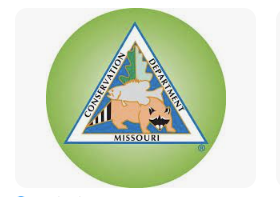 Proper disposal of a deer carcass is one of the final steps of the deer hunting process and is as important as any other part of deer hunting.
Proper disposal of a deer carcass is one of the final steps of the deer hunting process and is as important as any other part of deer hunting.
One reason this part of deer hunting is important is because there are regulations that pertain to the disposal of deer parts. In Missouri, the improper disposal of deer parts falls under the state statute that covers the unlawful disposition of a dead animal. Deer hunters violate this statute, and commit a Class C misdemeanor, if they knowingly place or cause to be placed the carcass or offal of any dead animal:
• Into any well, spring, brook, branch, creek, pond, or lake
• On any public road or highway, river, stream, or watercourse or upon the premises not his or her own for the purpose of annoying another or others.
Besides the illegalities involved with the improper disposal of a deer carcass or its parts, dumping deer parts on the landscape is a way to spread chronic wasting disease (CWD), a disease that is fatal to deer. The infectious agent for CWD is a protein called a prion. Prions can remain viable on the landscape long after remains of an infected carcass decompose, which could potentially expose other deer to CWD.
Hunters who harvest deer within the 38 counties that comprise Missouri’s CWD management zone should remember there are special restrictions for those counties regarding deer carcass movement. A description of these regulations is in the 2022 Fall Deer and Turkey Hunting Regulations booklet available at most MDC offices and places that sell hunting and fishing permits.
Leaving deer parts on someone’s property can also show a lack of courtesy on the part of a hunter. If a landowner who is unfamiliar with deer hunting and field-dressing comes across a gut pile on their land, your hunting on that property will probably be a one-and-done experience. Check with landowners about their wishes for deer parts disposal.
Here are proper disposal options hunters can use to get rid of their deer carcass parts:
• Place deer parts in trash or landfill. The best way to prevent the spread of CWD is to place carcass remains in trash bags and dispose of them through trash collection or at a permitted landfill.
• Bury deer parts on site. If you can’t bag and place in trash or a permitted landfill, bury carcass remains at or near where the deer was harvested. Bury deep enough to prevent access by scavengers. Burial will reduce, but not totally eliminate, the risks of spreading CWD.
• Leave on site. As a last resort, leave carcass remains on site, if this is agreeable with the landowner. While this will not prevent scavengers from scattering potentially infectious parts, the remains will stay in the general area where the deer was taken. If CWD is already present in the area, it will likely remain there and not be moved to another area. If you choose this option and it’s agreeable with the landowner, ask if there’s an out-of-the-way area where the landowner prefers that the deer remnants are deposited.
To report illegal dumping of a deer carcass, and other wildlife-related violations, contact a local conservation agent or call the Operation Game Thief Hotline at 1.800.392.1111.




Facebook Comments